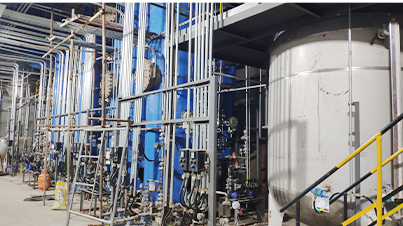Poly Aluminium Chloride Use in Potable Water Treatment Solutions and Benefits
Poly Aluminium Chloride for Drinking Water Treatment
The growing demand for clean and safe drinking water has resulted in a continuous exploration of effective water treatment solutions. Among these solutions, Poly Aluminium Chloride (PAC) has gained significant attention due to its outstanding coagulating properties. This article explores the importance, application, and benefits of using PAC in drinking water treatment.
What is Poly Aluminium Chloride?
Poly Aluminium Chloride is an inorganic polymer with the chemical formula Aln(OH)mCl(3n-m), where 'n' and 'm' represent the number of aluminum and hydroxyl groups, respectively. It appears as a white or pale yellow powder or liquid and is soluble in water. PAC is produced through the hydrolysis of aluminum chloride in the presence of a base such as sodium hydroxide or aluminum oxide. The resulting product is a highly effective coagulant used widely in water treatment processes.
Importance in Water Treatment
Coagulation is a crucial step in water treatment, aimed at removing suspended particles, colloids, and other impurities from water. Traditional coagulants like aluminum sulfate have been widely used; however, PAC presents several advantages that make it a preferred choice in many applications. These advantages include higher efficiency at low doses, a broader pH applicability range, and the ability to function effectively in different water qualities.
Mechanism of Action
The coagulation process involves several stages, beginning with the neutralization of charges on suspended particles. Positive charges from PAC neutralize the negative charges of the particles, promoting aggregation or flocculation. When these particles clump together, they form larger aggregates that can be easily removed through sedimentation or filtration.
In addition, PAC helps in bridging gaps between particles, enhancing the formation of flocs—larger aggregates that settle quickly and can either be filtered out or removed through sedimentation. This mechanism allows for the reduction of turbidity, color, and organic matter in drinking water, making it more suitable for consumption.
Advantages of Using PAC
poly aluminium chloride for drinking water

1. Effectiveness at Low Dosages PAC is more effective than traditional coagulants, such as alum, typically requiring lower dosages to achieve similar or better water quality results. This property not only reduces chemical costs but also minimizes the volume of sludge generated during the treatment process.
2. Versatility Across a Range of pH Levels PAC shows effectiveness across a broader pH range (5.0 to 9.0), whereas traditional coagulants usually perform best at specific pH levels. This adaptability makes PAC suitable for treating various water types, including those that are highly acidic or alkaline.
3. Improved Settling Rates The flocs formed by PAC tend to settle faster, which is advantageous in terms of operational efficiency. Faster sedimentation reduces the time and energy required for water treatment, enabling facilities to increase their throughput and treat larger volumes of water efficiently.
4. Reduced Residual Aluminium Due to its polymeric structure, PAC tends to leave lower residual aluminum concentrations in treated water compared to other aluminum-based coagulants. This feature is particularly significant considering the potential health concerns surrounding aluminum in drinking water.
5. Environmental Benefits The use of PAC can lead to a decrease in sludge volume in wastewater treatment, contributing to lower disposal costs and environmental impact. The reduced chemical footprint also aligns with growing sustainability goals within water treatment practices.
Application in Drinking Water Treatment
PAC is widely applied in municipal water treatment plants, industrial water systems, and even in home water purification systems. It serves as an essential component in processes aimed at ensuring the safety and quality of drinking water by effectively removing pathogens, organic materials, and contaminants.
Conclusion
Poly Aluminium Chloride is a valuable asset in the quest for safe and clean drinking water. Its effectiveness, versatility, and environmental advantages make it a preferred choice in water treatment processes. As global water demands continue to rise, the role of PAC in ensuring water quality will likely become increasingly critical, underscoring our ongoing commitment to providing access to safe drinking water for all. By embracing advanced treatment methods such as those involving PAC, communities can invest in healthier futures, ensuring that clean water is available for generations to come.
-
Water Treatment with Flocculant Water TreatmentNewsJun.12,2025
-
Polymaleic AnhydrideNewsJun.12,2025
-
Polyaspartic AcidNewsJun.12,2025
-
Enhance Industrial Processes with IsothiazolinonesNewsJun.12,2025
-
Enhance Industrial Processes with PBTCA SolutionsNewsJun.12,2025
-
Dodecyldimethylbenzylammonium Chloride SolutionsNewsJun.12,2025





